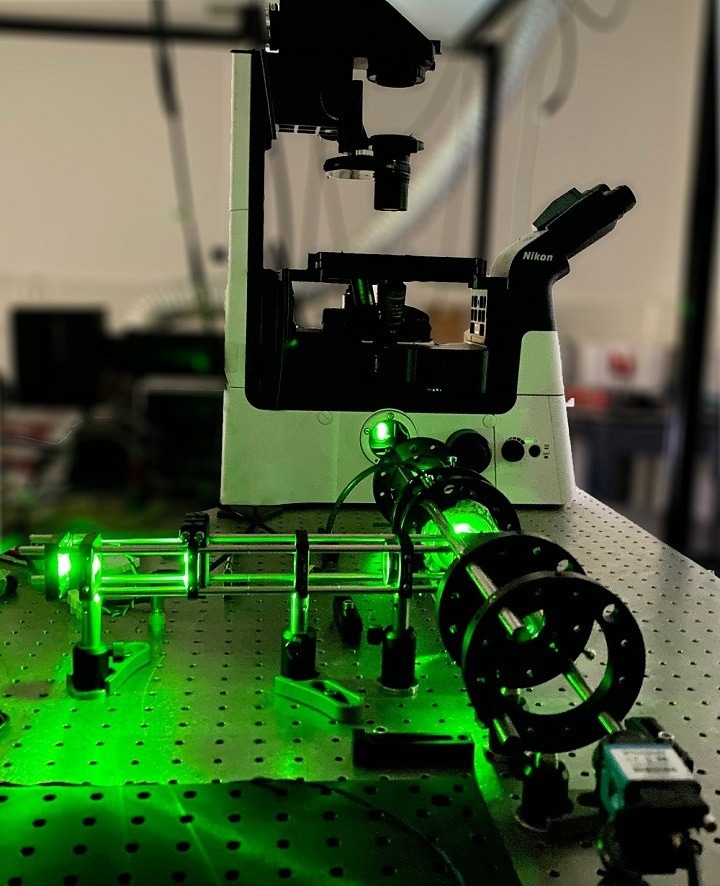A group of specialists from Sensofar Tech and the University of Barcelona have created an innovative technique for rapidly, precisely, and non-invasively obtaining three-dimensional images of a study sample.
 A technological innovation designed by the University of Barcelona and the company Sensofar Tech facilitates the characterization of the three-dimensional structure of objects much more quickly, accurately and economically than other current systems. Image Credit: University of Barcelona
A technological innovation designed by the University of Barcelona and the company Sensofar Tech facilitates the characterization of the three-dimensional structure of objects much more quickly, accurately and economically than other current systems. Image Credit: University of Barcelona
The novel system can characterize an object’s three-dimensional topography with speed and spatial resolution, outperforming current technological techniques for identification and recognition.
This new system expands upon optical profilometry technology, which is widely used in quality control and part inspection across a range of industries, from 3D-printed components to coronary prostheses (stents) or the detection of surface imperfections or roughness.
This technical invention was published in an article in Nature Communications, signed by experts from UB’s Faculty of Physics, Martí Duocastella and Narcís Vilar, and Sensofar Tech’s Roger Artigues and Guillem Carles.
More Accuracy and Speed to Characterize 3D Samples
Optical profilometry is an approach for measuring the three-dimensional profile of objects using light.
It is a crucial methodology in areas such as quality control in industrial processes or, on a scientific scale, in the measurement of micro- and nanostructures. Typically, the profile of a micrometric object is measured using a microscope, which obtains a collection of hundreds of images at different heights and planes of the object.
Martí Duocastella, Professor, Department of Applied Physics, University of Barcelona
“This is a process — he continues —, that involves scanning the sample plane by plane, an inherently slow process. In the new study, we present an innovation that is based on drastically reducing the acquisition time of this image collection,” Duocastella added.
The new technology can operate at the micrometer scale on reasonably large samples in real-time (up to 60 topographies per second).
Duocastella stated, “Current technological systems can only achieve these speeds on very thin samples, or on large samples, but with low spatial resolution. It is likely that our system can have a more significant impact because of its ability to characterize dynamic processes. So, thanks to our technology, the rapid movement of a small device — with a gas sensor — can be characterized in 3D, something that was impossible until now.”
Scanning the Sample Thousands of Times Per Second
“Our idea is to intelligently interrogate the sample, similar to the way it is done in the Who’s Who game. So far, profiles are acquired by asking each plane if we had information: ‘Is the sample in plane 1?’, ‘Is it in plane 2?’, ‘In plane n?’ Each question involved making an image. In contrast, in our study we show that it is possible to interrogate different planes together: ‘Is the sample between plane 1 and plane 7?’. The result is that we achieved an enormous reduction in the number of images: if before we needed a hundred images, now we have enough with eight,” Duocastella added.
The new approach necessitates quick sample scanning and synchronization of pulsed light of varying durations. Professor Duocastella created an ultrafast liquid lens at Princeton University (United States) that enables thousands of scans per second. Synchronization was achieved using an in-situ programmable gate array (FPGA) to provide the signal to pulse the light and capture the camera image.
One of the most challenging aspects was obtaining high data acquisition rates.
“In this case, the signal received from the sample is weaker, and greater precision in the signals is needed. However, thanks to the work of PhD student Narcís Vilar, we were able to overcome these obstacles and successfully implement his new technology,” Duocastella noted.
The study is part of the industrial doctorate program financed by the Agency for Management of University and Research Grants (AGAUR), with part of its development based on the European Research Council (ERC) project directed by Martí Duocastella and managed by the Bosch i Gimpera Foundation (FBG).
The study’s major goal was to develop a specific type of optical profilometer based on the projection of light patterns.
The team concluded, “We are currently working on its implementation in other types of profilometers, including interference, polarization or confocal microscopes. We hope that by intelligently interrogating the sample, we can further improve current systems to characterize 3D samples with unprecedented accuracy and speed.”
Journal Reference:
Vilar, N., et al. (2024) Fast topographic optical imaging using encoded search focal scan. Nature Communications. doi:10.1038/s41467-024-46267-y